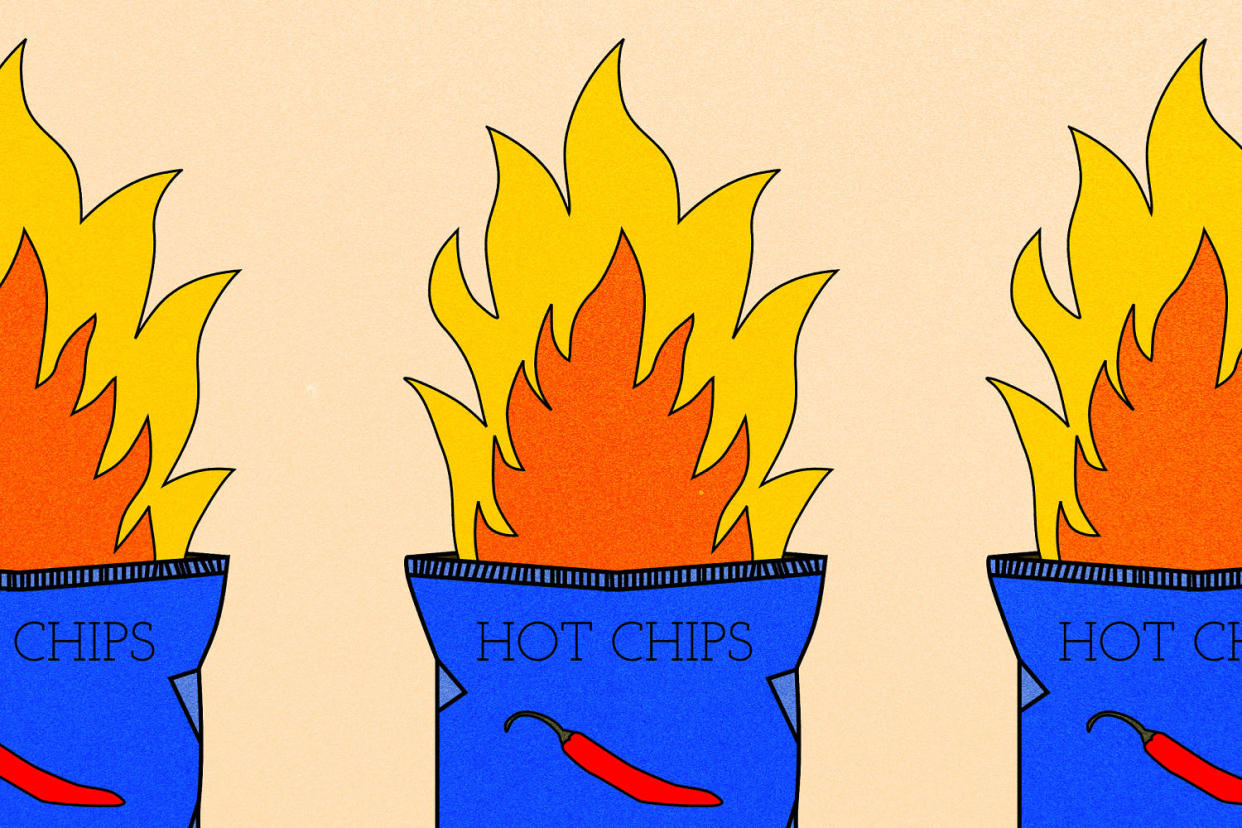Eating sour or spicy foods is more about your brain than palate, scientists say

When 36-year-old Nelson Cheney was little, he began eating spicy peppers and sauces to impress his dad. Years later, he still consumes these foods, only now for his 1.1 million followers on TikTok.
Cheney, known by his social media handle “@craving_capsaicin” — a nod to the chemical compound that gives chili peppers their heat — got hooked on the adrenaline rush he feels when he eats extremely spicy foods.
“For me, it is a way of life,” Cheney said. “I love chasing that endorphin dump. I love the feeling when I beat a challenge and get all pumped up. … It’s kind of like winning a race.”
Scientists say he’s not the only one.
Whether the spice they seek is fiery or acidic and sour, humans can be drawn to the perceived danger of extreme foods. Like watching a horror movie, the experience stimulates a fight-or-flight response during which the brain releases endorphins and dopamine, hormones that make people feel good. After the brain determines everything is safe, there’s a sense of accomplishment in overcoming a dangerous situation.
“These challenges are really drawing people in who have that psychological affinity — sensation-seeking, reward-seeking types of behaviors. So the more dangerous it is, the more thrilling it is,” said Elisa Trucco, director of the Research on Adolescent and Child Health Lab at Florida International University.
Both sour and spicy foods generate painful responses, though they activate different nerves in the body. When saliva breaks down spicy food, capsaicin travels to the throat, nose and esophagus and activates nerves involved in the sense of touch, said Robert Pellegrino, a postdoctoral fellow at the Monell Chemical Senses Center in Philadelphia. The ensuing pain is similar to touching a hot stove.
“You can feel spice everywhere,” Pellegrino said.
On the other hand, sourness activates taste nerves. When people eat sour foods, the body initiates a pain reaction because it detects an acidic substance that could be harmful if ingested.
In both cases, the brain can override the initial pain reaction. Paul Rozin, a professor of psychology at the University of Pennsylvania, attributes this override to humans’ ability to differentiate between serious and “benign” pain. Eating moderate amounts of spice is generally safe, he said, but even so, the body treats it as a health threat.
“That’s where the pleasure comes, from the fact that you’re overriding your body’s signal not to do this,” Rozin said.
In addition, people often film these food challenges on social media, which triggers a similar dopamine release, because it’s designed to positively reinforce our behavior through likes and follows.
“I think a lot has to do with the status, the popularity and the feedback that you get from other people,” Trucco said.Cheney, a sheet metal worker by day, said he enjoys the community he has created online, which he views as a result of his passion for growing and eating peppers.
“I’ve got so many people that went from not even eating hot stuff to having a tolerance and now eating spicy food daily. So it’s cool to get people joining in with me,” Cheney said.
While all these feel-good hormones may satisfy some individuals’ cravings, extreme food challenges have faced backlash amid several deadly incidents. Last year, a teen died in Massachusetts after attempting to eat a tortilla chip packed with chili pepper extract for a social media challenge. Extremely sour foods can also have harmful consequences: In April, a 10-year-old girl in the U.K. suffered burns in her throat after ingesting supersour candy she saw in a TikTok video.
Dr. Edwin McDonald, a gastroenterologist at the University of Chicago Medical Center, emphasized that while spicy and sour foods are safe in moderation, extreme spice could mean a hospital trip.
“Consuming some foods that have capsaicin in it may be associated with increasing longevity and decreasing the risk of cancer,” McDonald said. “But these are not the peppers that people are doing in the challenge.”
Extreme eating challenges can be dangerous for those with underlying medical conditions such as high blood pressure and asthma, said Dr. Chantel Strachan, an internal medicine physician and assistant professor at Columbia University’s Vagelos College of Physicians and Surgeons. Because of the uncertainty, Strachan advised thinking twice before participating, and consulting a doctor ahead of time.
“Unfortunately, we usually find out after a first attempt how you react to these substances,” she said.
Children and teens tend to be most susceptible to social media challenges, which is why Trucco said parents should pay attention, too.
“The way these challenges are depicted, it’s very glamorized, you only see the benefits,” Trucco said. “As a parent, it’s really important to be aware of what they are and have those open conversations with your children.”
